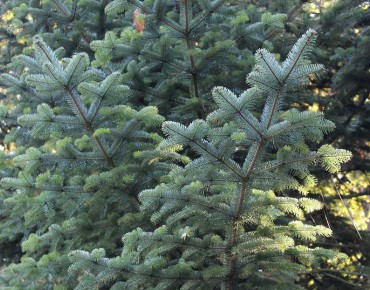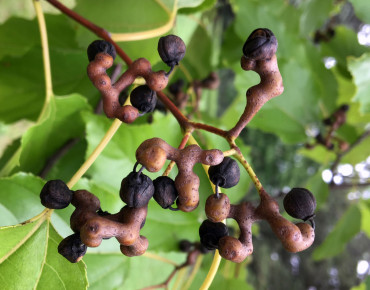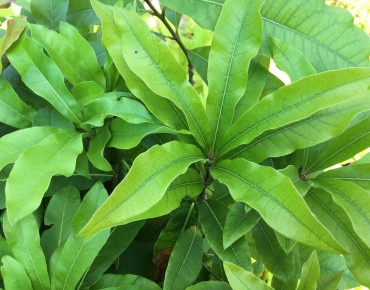Castor-aralia
Kalopanax septemlobus
Description
Native to eastern Asia, the Castor-aralia is a tree highly sought after for its many ornamental assets, such as the beauty of its foliage and its abundant flowering and its exotic appearance.
Deciduous, the leaves measure up to 35 cm wide and are carried by petioles that can reach 50 cm long. Dark green in color, they are deeply cut into 5 to 7 triangular lobes, hence the name Kalopanax Septemlobus. In autumn, they turn a sumptuous golden yellow.
Very small, the flowers of Castor-aralia are melliferous and appear around August or even September in the form of radiant inflorescences measuring 20 to 30 cm in all directions. They are white or yellowish green and sparkle dazzlingly when they catch a few rays of sunlight.
The fruits are blue-black drupes when ripe. They measure approximately 4 mm and contain 2 to 3 seeds. The flowers and fruits of Kalopanax Septemlobus make it a very nourishing plant that attracts bees, butterflies and birds.
In our gardens, the Castor-aralia can reach up to 10 m in height and 4 m in width after 10 years. The trunk and branches are gray and thorny, which gives them a most attractive graphic appearance; these thorns disappear when the tree grows in size.
This tree should be installed in the sun or in partial shade. Very hardy, it tolerates extreme cold up to -40°C and resists drought. It will keep all its promises and more if planted in rich, slightly moist and fairly well-drained soil.
The Kalopanax Septemlobus looks great in isolation. An association with plants such as the Japanese Aralia or the opulent Tetrapanax Papyrifera Rex (or rice paper plant) will give your garden the appearance of a little corner of tropical jungle.
Features
- Common name : Castor-aralia
- Family : Araliaceae
- Category : tree
- Spread : 5 to 8 m
- Foliage : deciduous
- Color of flowers : white
- Use : isolated - shrubbery
- Soil : rich, slightly moist, well-drained soil
- Enemies : aphids - caterpillars
- Possible diseases : resistant to diseases
Expédition & livraison
How does the delivery work?
 As soon as you place your order your plants are selected
As soon as you place your order your plants are selected Each order is processed individually.
Each order is processed individually. Plants are packed, staked and labeled.
Plants are packed, staked and labeled. Packaging is carefully implemented to avoid any problems.
Packaging is carefully implemented to avoid any problems. Packages are ready to be shipped.
Packages are ready to be shipped.
Our delivery methods
Shipping of our plants throughout Europe (except overseas and islands).
Customer reviews



























